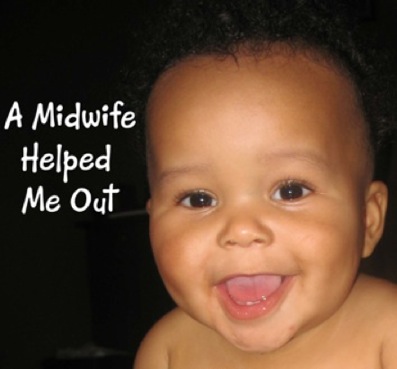
'
Today’s Challenge: Why not me?
If I am to be queer...that is to think queerly and abandon normativity, then I have to revisit my ideas of 'who gets to be what' in this life. If I am to be an activist who is truly willing to be transformed by moments, communities and the histories of which I am a part (and those that I am not)...then I have to embolden myself to think of myself as a healer, an artist, an educator and a student.... Internalized oppression, childhood physical and emotional abuse identity politics, and/or too much "My So-Called Life," what ever the reasons behind my deferring from a dream or entertaining a conceptualization of myself that seems too far gone, impractical, flawed, however magical...has no power today. Today there is just an audible enunciation of the statement: Why not me?.
I say this affirmation in preparation of my new doula training. That is to say my first. Being a doula is something I have thought on and off about for years now...never allowing my mind to settle long enough for the idea to take root. Being a healer of any kind seemed like the work of those who were already healed. Me, a survivor of several lifetimes of “over exposure to under living” seemed too broken, too tired, too scare and doubtful to even heal myself. Healers were people who had reached a nirvana, liked all kinds of herbal teas and spoke in gentle wave-like voices always findings its way to receptive people who were comforted by their presence.
I am a queer black female to male transexual of working class origins, who is a feminist, anti-capitalist, activist with able-bodied, lighter skin, and educational privilege. I am also a twin. I don't make all people comfortable all of the time and I was raised on Lipton-so that is what I drink. I am loud. Angry. Honest. Queerly gendered...an Aries. I am a fighter. And it is because of these reasons...that I can make room for women (etc.) who fight, curse, and proclaim that they are alive and birth life all around them, incessantly. After all, haven't brown folks, queers, indigenous communities been giving birth, healing and resisting forever?? Haven't we been birthing ourselves through healing practices and community building? Doesn't this delicious cycle then not posit birth as the ultimate act of resistance...knowing that, "we were never meant to survive?"
I was challenged by one of my housemates the other day (I live collectively in Greensboro, NC with several wonderful black visionaries/revolutionaries...those stories will come in later posts) when he arrived at the questions, "Isn't that kind of girly?" I appreciated the question and to some extent, I have asked myself that in one way or another before I had registered. As a black transman who passes more often than not as a Puerto Rican fag...does this women-sacred space still get to be mine?
In Arisika Razak's essay, "Toward a Womanist Analysis of Birth," she refers to birth as the first act of magic...the primary numinous event. She employs Alice Walker's definition of a womanist, and presents patriarchy, capitalism and industrialization as the forces that have moved so many of us away from the practices of midwifery and the conception of the midwife as a person that is "holistically rooted within her community," while simultaneously inculcating messages of men (transmasculine and non-transmen) as devoid of nurturing attributes or any feelings at all.
She poses,
Birth is such a universal and central aspect of human existence that it can serve as the nucleus around which to build a paradigm for positive human interaction...Each of these elements-womb, birth culture, and family-has a profound effect upon the new human being. Each deserves our best thinking and analysis. What would it be like if we envisioned a society in which positive, lifelong, nurturing support-from old to young, and young to old-were the dominant theme of human interaction. What would it be like if the human quest for adventure were linked to issues of social justice and individual empowerment?"
p. 166-167
Now…who wouldn’t want to be a part of that…whatever your gender? I know that this journey will further connect me to the life of all living things, and those that have been recycled in universe. This work is a continuation of my need to preserve culturally specific practices of care, my commitment to reflection…the reverence of nature and the expansion of my spirit. Although at times her analysis is not always inclusive of the many ways gender is enacted by humans or how class, race, etc. compounds the birthing experiences of everyone in this country, her urgent proclamation of: Let the shared experience of childbirth reclaim the human soul (p. 172), resonates in me still.
When I think about being a doula, I think about my twin sister and our journey together at the age of twenty of bringing my niece into the world-not knowing whether we were coming or going, permanently misplacing the birth video before the baby got home from the hospital, and my sister immediately being counseled on the kinds of contraception she planned to use, henceforth. When I think about being a doula I think of how queers, brown folks, queer brown folks, have been made to move away from their traditions and their own resiliency and I would like to be a part of a new order to restore that faith in our own bodies, spirits, and communities.
Moreover, I know that trans people are having babies, cis-gender trans partners, my housemate, and hopefully many, many more people will also be blessed with a birthing experiences that resembles more of our hopes and dreams than our intentions manufactured and regulated. So I state...Why not me? Why not now? Why not us? "WE are the ones we have been waiting for."
Check the Blogroll for folks engage in amazing work around birth!


